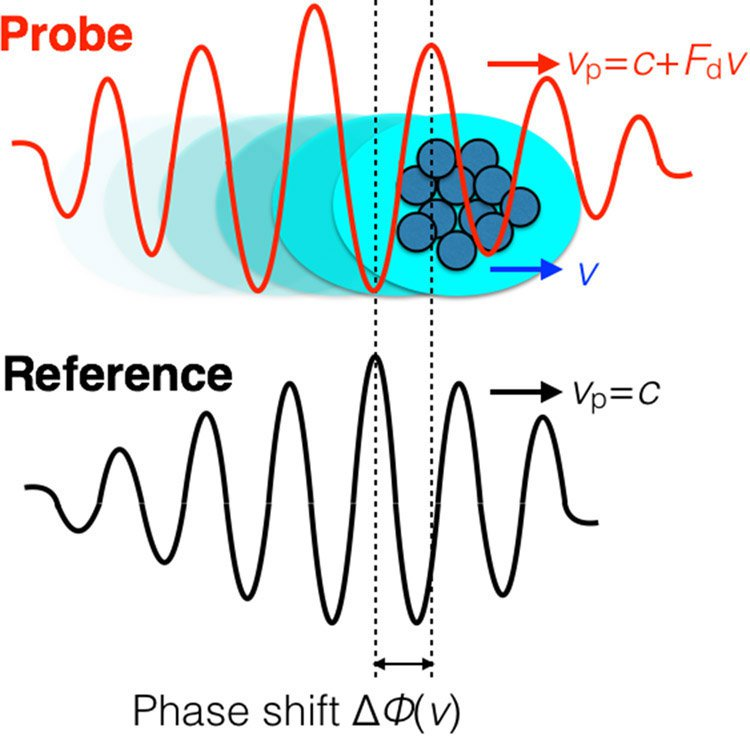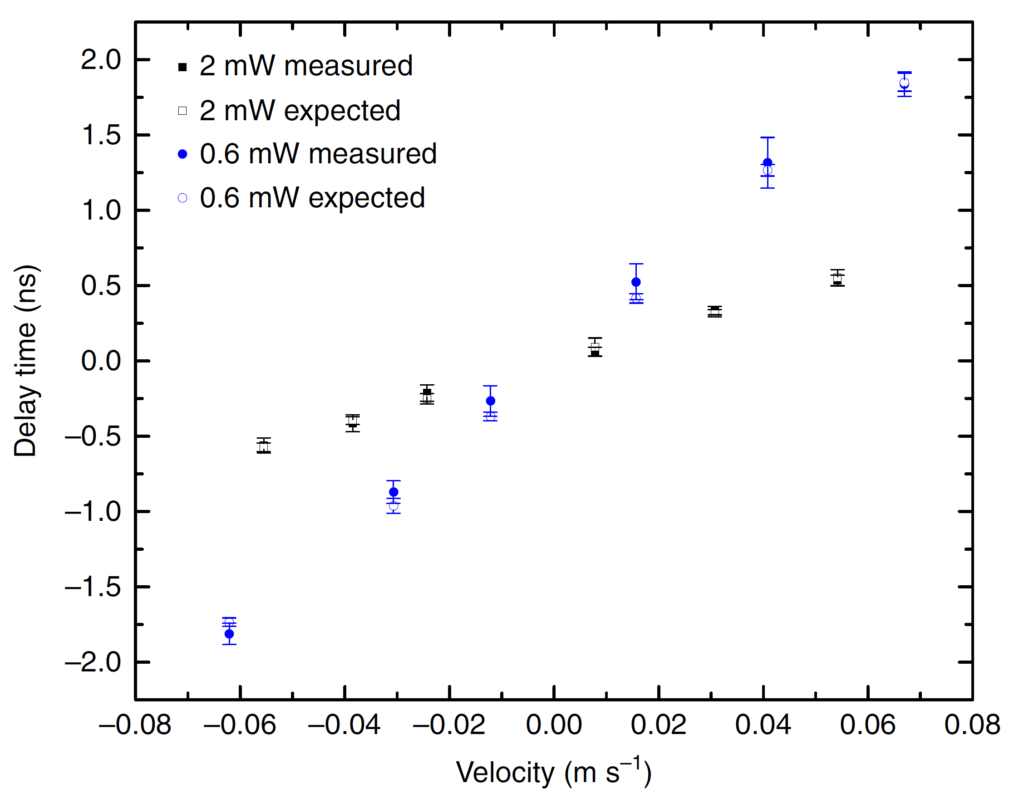Quantum Sensors with Thermal Atoms
Quantum-enhanced velocimetry with Doppler-broadened atomic vapor


Traditionally, measuring the center-of-mass (CM) velocity of an atomic ensemble relies on measuring the Doppler shift of the absorption spectrum of single atoms in the ensemble. Mapping out the velocity distribution of the ensemble is indispensable when determining the CM velocity using this technique. As a result, highly sensitive measurements require preparation of an ensemble with a narrow Doppler width. Here, we use a dispersive measurement of light passing through a moving room sensitivity of 5.5 μm s^-1 Hz^(-1/2). The dispersion of the medium is enhanced by creating quantum interference through an auxiliary transition for the probe light under electromagnetically induced transparency condition. In contrast to measurement of single atoms, this method is based on the collective motion of atoms and can sense the CM velocity of an ensemble without knowing its velocity distribution. Our results improve the previous measurements by 3 orders of magnitude and can be used to design a compact motional sensor based on thermal atoms.
Large Fizeau’s light-dragging effect in a moving electromagnetically induced transparent medium


As one of the most influential experiments on the development of modern macroscopic theory from Newtonian mechanics to Einstein’s special theory of relativity, the phenomenon of light dragging in a moving medium has been discussed and observed extensively in different types of systems. To have a significant dragging effect, the long duration of light travelling in the medium is preferred. Here we demonstrate a light-dragging experiment in an electromagnetically induced transparent cold atomic ensemble and enhance the dragging effect by at least three orders of magnitude compared with the previous experiments. With a large enhancement of the dragging effect, we realize an atom-based velocimeter that has a sensitivity two orders of magnitude higher than the velocity width of the atomic medium used. Such a demonstration could pave the way for motional sensing using the collective state of atoms in a room temperature vapour cell or solid state material.